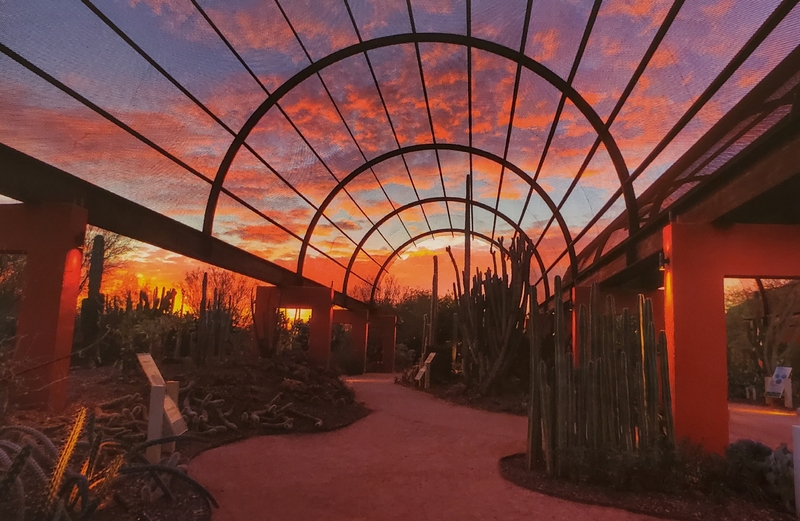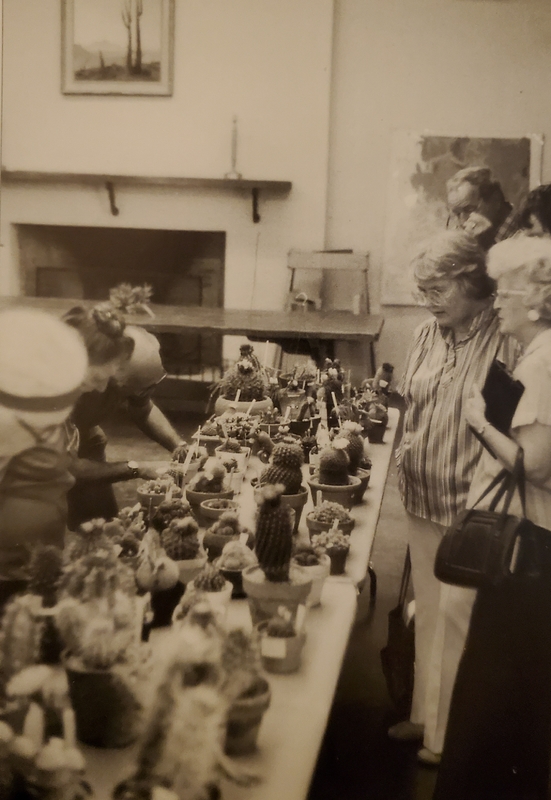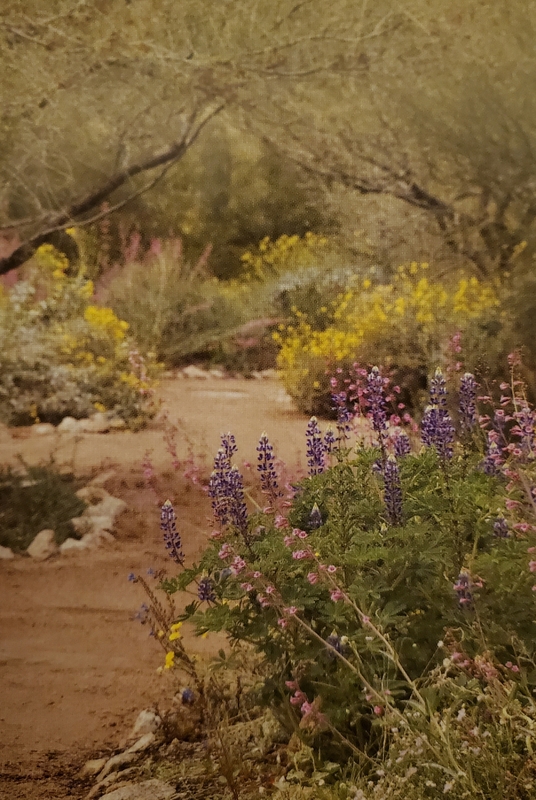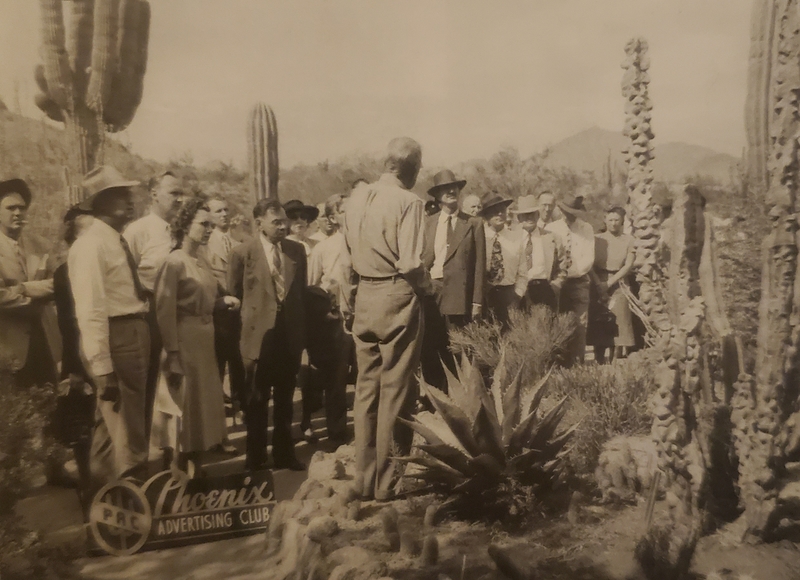
As the Garden's popularity grows, so too do the challenges of balancing preservation with public access, revealing the ongoing struggle to protect and promote the unique ecology of the region.
The Desert Botanical Garden emerged as an antidote to the agricultural and economic development of Phoenix. A dedicated group of Phoenix residents, concerned about the city’s sprawling expansion and the increasing destruction of the surrounding Sonoran Desert, founded the Desert Botanical Garden in 1939. Led by Swedish botanist Gustaf Starck and local luminary Gertrude Webster, they established the Garden to educate the public about the importance of environmental protection and to create a living laboratory for scientific research. However, just as it has nurtured research on and appreciation of the Sonoran Desert, the Desert Botanical Garden has also contributed to the development of Phoenix's tourist economy.
In the 1930s, leaders in city government and the local business community sought to attract tourists to Phoenix. However, these same politicians and businessmen often saw the desert as an obstacle to the growth of the city’s tourist economy. They were convinced that tourists would never come to Phoenix to see the desert, what they believed to be an ugly and barren landscape. The city leadership thought that Phoenix should be developed to look more like a city in the American Midwest or Northeast in order to attract visitors from those parts of the country. Residents were encouraged to plant grass lawns and non-native shade trees. The city bulldozed the desert to make way for grassy public parks and lush green golf courses. Famously, the municipal government and Phoenix Chamber of Commerce sponsored a campaign to promote development under the slogan “Do Away With The Desert.” Before the establishment of the Garden, even the most enthusiastic boosters of tourism in the Valley saw little value in the Sonoran Desert.
Since its founding, the Desert Botanical Garden has offered an alternative vision for Phoenix's relationship with the local desert landscape, encouraging visitors to see it as a unique ecosystem. With a founding mission emphasizing scientific discovery and public education, the Garden taught its constituencies--both local residents and tourists--about the Sonoran Desert. For example, first cactus shows open to the public took place in the 1940s. The contests encouraged visitors to see themselves as being connected to the desert in a real and tangible way. Guests at the Garden were invited to learn about desert horticulture and take cactus and agave plants back to their own gardens and backyards. In the 1950s, the Garden offered guided nature walks and birdwatching tours. These curated excursions aimed to communicate both the beauty and importance of the ecology of the Sonoran Desert.
Begun in the 1970s, the spring wildflower exhibitions have become some of the most popular events at the Desert Botanical Garden. These wildflower showcases invite guests to view the desert landscape as colorful and dynamic rather than boring and dull. The Garden’s quarterly magazine, The Sonoran Quarterly, portrayed the Sonoran Desert as exciting and exotic in vibrant, glossy photo spreads. In a very real sense, what the Garden was selling was the Sonoran Desert to Phoenix residents, many of whom lived in communities in which the desert had been replaced by green lawns and suburban bungalows. The Garden presented an alternative vision for Phoenix: a magical place embedded within a beautiful desert landscape, endowed with a rich ecological heritage. The Desert Botanical Garden has taken what many in Phoenix saw as a handicap to economic development and turned it on its head.
And yet, the tension between development in Phoenix and preservation of the native environment continues to present challenges. In many ways, the Desert Botanical Garden is the perfect embodiment of this tension. The Garden was founded in an effort to protect the Sonoran Desert but, paradoxically, its success has contributed to the further exploitation of the local landscape. As one of the most popular tourist attractions in the Valley, the Garden has brought more people to Phoenix and so contributed to the growth of the city. Specifically, the Garden's goal of encouraging people to engage with the Sonoran landscape has resulted in many more residents and tourists going into the desert to hike, bike and enjoy the sights. This increased traffic can sometimes have negative effects on the fragile ecosystem of the desert.
The complicated relationship between commerce and conservation that inspired the Garden’s founding in the 1930s remains a significant issue. And the problems associated with ecological tourism in Phoenix are not unique to the Botanical Garden as similar issues have arisen over public access to neighboring Papago Park as well as the South Mountain Park and Preserve. In spite of, or perhaps because of, these new challenges, the staff and volunteers at the Garden remain committed to the institution’s original goal of preserving the desert for future generations. As Phoenix enters the twenty-first century, the Desert Botanical Garden's mission of educating the public about environmental protection and ecological sustainability has become more important than ever.
edited 12/17/19: mtt
Images



